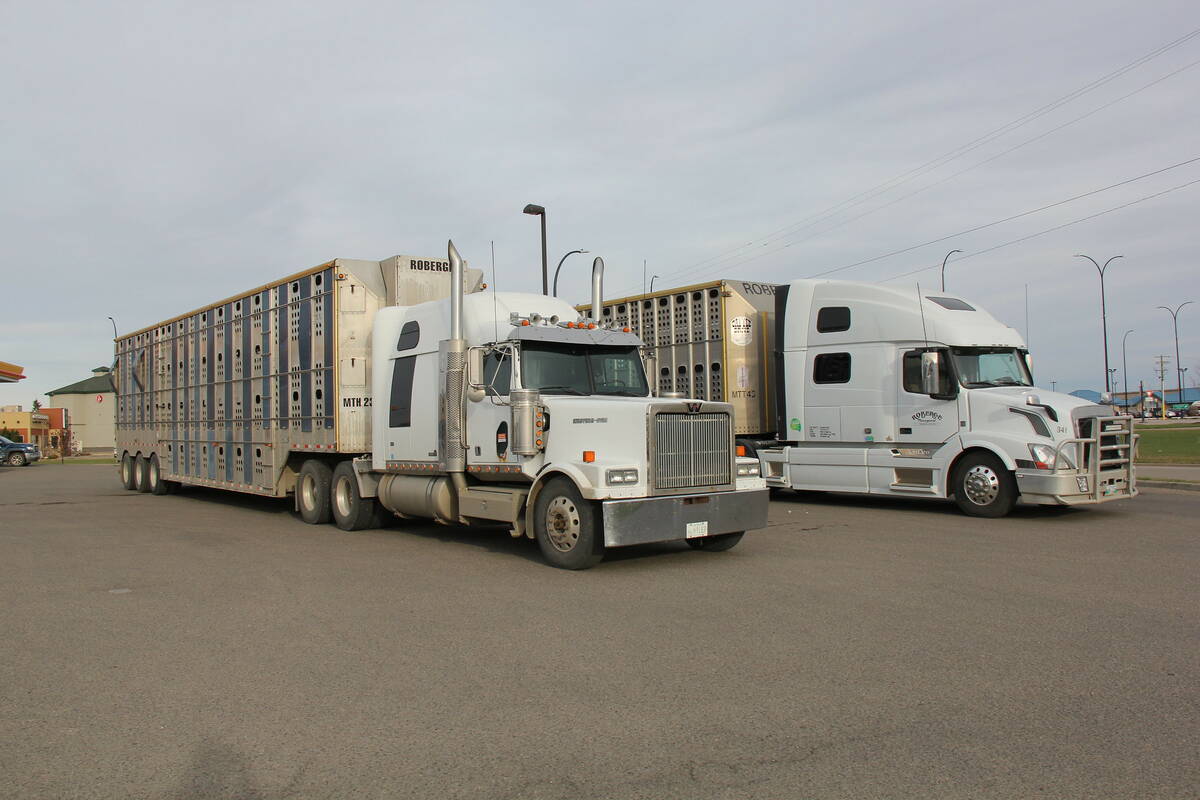The problem, which farmers often underestimate, is persistent around the world and in many cases is not getting better
VANCOUVER — Lameness is the number one problem among dairy cattle affecting a cow’s quality of life and health.
“It is such a painful disease and most of the costs are related to the production loss,” said Laura Solano, a Calgary animal care specialist who works with dairy farmers through her company, Farm Animal Care Associates.
There are degrees of lameness ranging from severely to moderately lame cows. The cow may not have lesions on the feet but other signs will indicate trouble walking.
“We disagree quite a bit on the moderately lame cow because the symptoms can be very subtle,” Solano said in an interview.
Read Also

Rest stops of no benefit to feeder calves during long hauls, according to researchers
Three Canadian transport trials showed that providing a rest stop during long-distance transport provided no clear or consistent benefits for the health or welfare of feeder calves.
“Early detection of lameness is not easy but that is where the secret of prevention is, capturing those subtle changes in the way they walk,” she said.
The problem is persistent throughout the world and in many cases, it is not getting better.
In Canada, the United Kingdom, the United States and New Zealand, farmers typically ranked fewer than 10 percent of their cows as lame but researchers flagged about a quarter of the animals.
“All over the world farmers are underestimating half of the actual lameness issues. Most of this underestimation comes from mildly or moderately lame cows,” she said at the recent American Society for Animal Science meeting held in Vancouver.
There could be a genetic component with conformation or bigger cows in older barns may be at fault. They are longer and heavier but their hoofs supporting that extra size are not proportionately larger.
“We are dealing with really big cows in older facilities and that is very common to see,” she said.
Overall, management and facilities are the greatest risk factors.
The condition can be worsened by the type of stalls provided for the cows, lying surfaces, floor types, slippery floors, alley dimensions and injuries from equipment, such as manure scrapers. When they walk through the barn they may get hurt by rough edges or sharp turns as they go by.
Deep-bedded surfaces are associated with less lameness in research from all over the world. Bedding should be at least five centimetres deep and the softer the better.
Straw, sawdust, wood chips or composted bedding material in the stall can make the cow’s lying-down time more comfortable. Wood shavings can vary in fineness and bigger chunks can protrude and hurt them.
“I tend to see a lot more hock lesions from wood shavings and that comes from the size of the wood. Sometimes you see them stuck in their hocks and being very abrasive,” she said.
Farmers are busy so it is a good idea to have someone dedicated to watching the cows as they walk.
“Most of our Canadian farms are family run and it is unlikely to expect they are going to watch their cows walking once a month,” she said.
The introduction of the national dairy quality assurance program, ProAction, includes mandatory animal welfare assessments. Lameness scores are part of that animal care evaluation.
Quality milk and food safety have been around a long time but the welfare component with lameness assessments is new.
“Lameness would be ones we are most eager to improve,” said Mike Slomp at Alberta Milk.
Independent classifiers from Holstein Canada have been hired to evaluate a percentage of the cows at every farm. The review includes a gait score and specific points of observation as the animal walks up and down the alley.
The first round of evaluations will provide a benchmark for farms across the country.
Once that is complete, work can start on individual herd improvements.
The scoring system is a rating of red, yellow or green.
A red score requires the farmer to produce a written action plan to improve.
“That expectation is the same all across the country,” Slomp said.
The ProAction program has set a target of less than 10 percent lame cows in each herd but a national dairy study found probably 25 percent of cows in free-stall herds were lame and almost 35 percent of those in tie-stall barns were rated as lame.
For more information and videos, visit dairyhoofhealth.info/.















